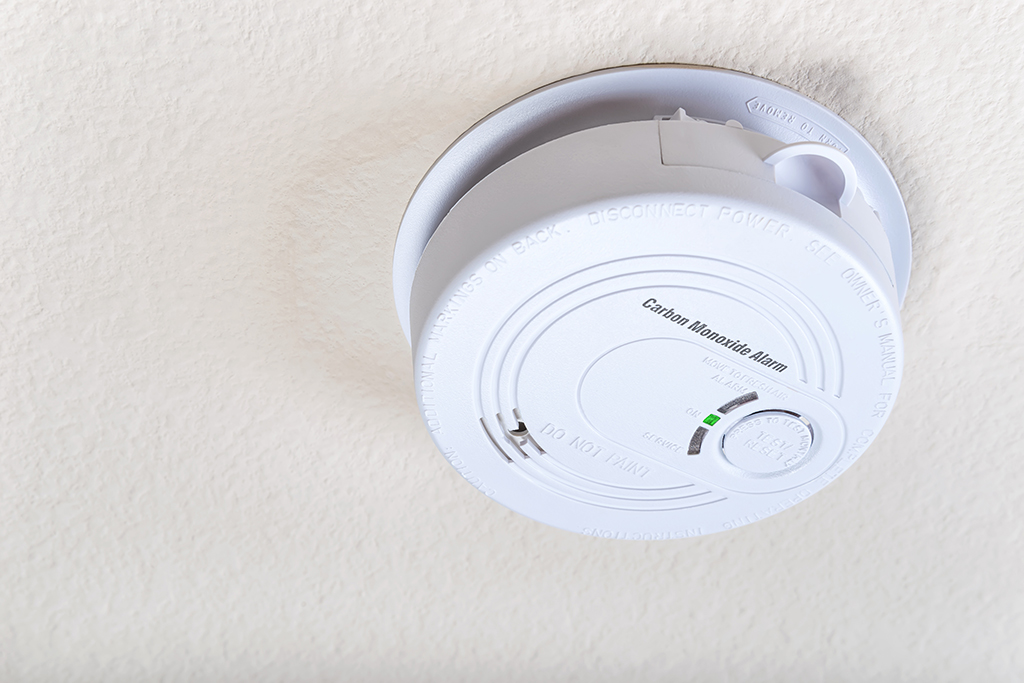
Areas Where An Electrician Should And Shouldn’t Install a Carbon Monoxide Detector In Your Home | Myrtle Beach, SC
According to a research study, carbon monoxide is the leading cause of poisoning deaths in the United States. CDC reports that almost 50,000 emergency cases and 430 deaths occur annually in the United States due to inhalation of carbon monoxide (CO).
This lethal gas is produced due to the incomplete combustion of fuels, such as coal, kerosene, propane, or natural gas. One dangerous thing about CO is that it’s odorless and colorless, making it almost impossible to detect unless you’ve got a carbon alarm system in your home.
Like smoke detectors, a carbon monoxide detector is a must-have, and if you haven’t given it any slightest thought, it’s good to have an electrician in Myrtle Beach, SC install one in your home. It will save you someday.
A carbon monoxide alarm should be installed correctly for optimal efficiency and warning power. Again, since CO is lighter than air and rises, the United States Environmental Protection Agency recommends that your carbon monoxide detector be placed at least five feet high if you install it on the ceiling or wall. In this blog post, you’ll learn the various places an electrician should or shouldn’t put a CO detector in your home. Continue reading to know more.
Areas to Place a CO Alarm
Close to Each Bedroom or Sleeping Area
An electrician can install a carbon monoxide detector, preferably not more than 10 feet from each sleeping area or bedroom in your house. For example, they can place it between doors 20 feet from each other.
This is because CO leaks tend to be too common at night when you’re sleeping – this is the time when your furnaces go through frequent on-off cycles to keep your home at a steady temperature.
Installing a CO alarm can warn you of any potential tragedy while asleep. If you’re only installing a single carbon monoxide detector near a sleeping area, ensure it’s loud enough to wake all persons in the home.
Near an Attached Garage
Ever turned your car on and left it idle while attending to an urgent call or message? Or, have you ever let it on to let the interior warm up before jumping into the driver’s seat? If that’s the case, you probably have smoked that unpleasant gas, carbon monoxide!
It’s never recommended to idle your car in your garage. Even if you open the garage door, it takes almost no time for carbon monoxide levels to get alarmingly high. So, having a trained electrician in Myrtle Beach, SC install a CO detector in and around your garage is critical.
Just like your sleeping area, it’s advisable to get the alarm placed at least 10 feet from the garage door leading to your home. Also, you can ask the technician to install an alarm in any room above the garage for maximum efficacy.
Throughout Your Home
Due to carbon monoxide’s toxicity, you should consider having a CO detector on every level of your home, including the basement. This is because this gas can build up so fast and get trapped on only one floor in the home.
Consider a case where your basement furnace leaks but has no alarm installed. Even though your upper floors may have no dangerous amount of carbon monoxide, CO levels may be extremely high to cause suffocation for anyone who goes into the basement. Thus, it would be wise to hire a licensed electrician near you to install a whole-home carbon monoxide detection system.
Areas Not to Install a CO Alarm
Having looked at the areas in the home where an electrician can install a CO alarm, below are places where the carbon monoxide detector shouldn’t be installed:
Too Close to Fuel-Burning Appliances
When you switch on your stove, furnace, or water heater, it’s normal for them to produce a little carbon monoxide, which is harmless. However, if an electrician places a CO detector too close to these sensitive appliances, the alarm may go off.
Therefore, you’ll receive too many false alarms, making you not trust your detector, even if the alarm is real.
Near an Area with High Heat or Humidity
As mentioned earlier, if you have a carbon monoxide detector close to burning appliances, the device is vulnerable to picking up trace amounts of CO gas, which can cause a false alarm.
This, too, applies to areas susceptible to heat or humidity. For instance, bathrooms, small laundry rooms, or sunrooms.
Near Any Source of Blowing Air
It would be best not to put a carbon monoxide detector close to things such as a vent, open window, or fans. Why? Naturally, these areas have better airflow and may blow away any high levels of carbon monoxide, even from the detector itself.
Without sufficient air circulation to eliminate or lower the accumulated CO from such areas, you might experience a terrible situation without realizing it.
What happens is that the detector “thinks” the carbon monoxide levels produced are acceptable, so the alarm doesn’t go off. But, say a few meters on the other side of the room, the amount of this gas may be unreasonably high.
Final Thoughts
As a homeowner, ensure that your electrician follows the manufacturer’s specifications for any CO alarm you wish to install in your home. An incorrectly installed CO detector may pose serious health and fire risks to you and your loved ones.
Protect Your Home from Dangerous Carbon Monoxide Levels with Mister Sparky of Myrtle Beach
Are you considering installing a carbon monoxide detector in your home? Let the electricians at Mister Sparky of Myrtle Beach help you. Don’t DIY! We’re a leading residential electrical service and repair company offering timely, tailor-made solutions to our clients in the greater Eastern US, including Myrtle Beach, SC. Besides CO alarms, we also install smoke detectors and annunciators. For any inquiry, call us now!

